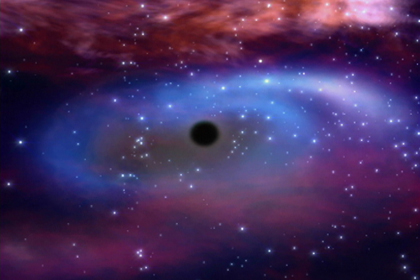Living the High Life
High-mass stars are important because they are responsible for much of the energy pumped into our galaxy over its lifetime. Unfortunately, these stars are poorly understood because they are often found relatively far away and can be obscured by gas and dust. The star cluster NGC 281 is an exception to this rule. It is located about 9,200 light years from Earth and, remarkably, almost 1,000 light years above the plane of the Galaxy, giving astronomers a nearly unfettered view of the star formation within it.
A very good year
The year 1905 was certainly a busy one for Albert Einstein. He had at least five papers published during that time. Not only would any scientist be proud to be so prolific, but Einstein was able to enjoy the fact these papers fundamentally changed the way we understood how the Universe worked.

How can we detect black holes?
Q: How can we detect black holes?

A: There are two basic ways we can detect whether there's a black hole. Black holes are, of course, dark by definition - not even light escapes them!
Star Blasts Planet With X-rays
Meet An Astronomy Intern: Jessica Brodsky
In this latest video blog, we sit down with Jessica Brodsky. Jessica is a student from Brown University who spent part of her summer doing detective work on the archive of Chandra images. Her task was to back fill the metadata into the Chandra images on chandra.si.edu. From her feedback, it was a useful experience, as Jessica's interests lie in digital assets management and web development. (We also heard that Jessica plans to take an astronomy course at Brown this year - awesome!).
Highest Energies in the Smallest State
This morning, the High Energy Astrophysics Division (aka HEAD) meeting kicks off in Newport, RI. What is this, you might ask? Well, the American Astronomical Society, or AAS, is the country’s largest professional group for astronomers. And because it is so large, they have also created several subdivisions so that scientists of a particular bent can gather to talk about their areas of interest.
NASA's Chandra Finds Nearest Pair of Supermassive Black Holes
Evidence for a pair of supermassive black holes in a spiral galaxy has been found in data from NASA's Chandra X-ray Observatory. This main image is a composite of X-rays from Chandra (blue) and optical data from the Hubble Space Telescope (gold) of the spiral galaxy NGC 3393. Meanwhile, the inset box shows the central region of NGC 3993 as observed just by Chandra.
Getting the Scoop on Space for Kids
This week, we're getting our foot in the door of an exciting new project. The European Southern Observatory has teamed up with the Universe Awareness project to produce kid-friendly versions of press releases on astronomy.

Meet an Astronomer: Joseph DePasquale
In this installment of our Meet An Astronomer video blog, we sit down with Joseph DePasquale. Joe is the Chandra science image processor who works hard to create the astronomy images that appear in press releases, on our web site, in print materials, and elsewhere. We think he has a pretty cool job, with a great combination of science and art.
Meet An Astronomer: Julia Lee
Back by popular demand is our video blog series, Meet An Astronomer.
Julia Lee is an associate professor in the astronomy department at Harvard. We caught up with Julia at a moment when she wasn't busy with her regular duties of running a research lab, teaching students, and everything else that a full-time position at a university like Harvard entails. Julia sat down with our "Meet an Astronomer" crew to explain how various choices she made led to her current career.



